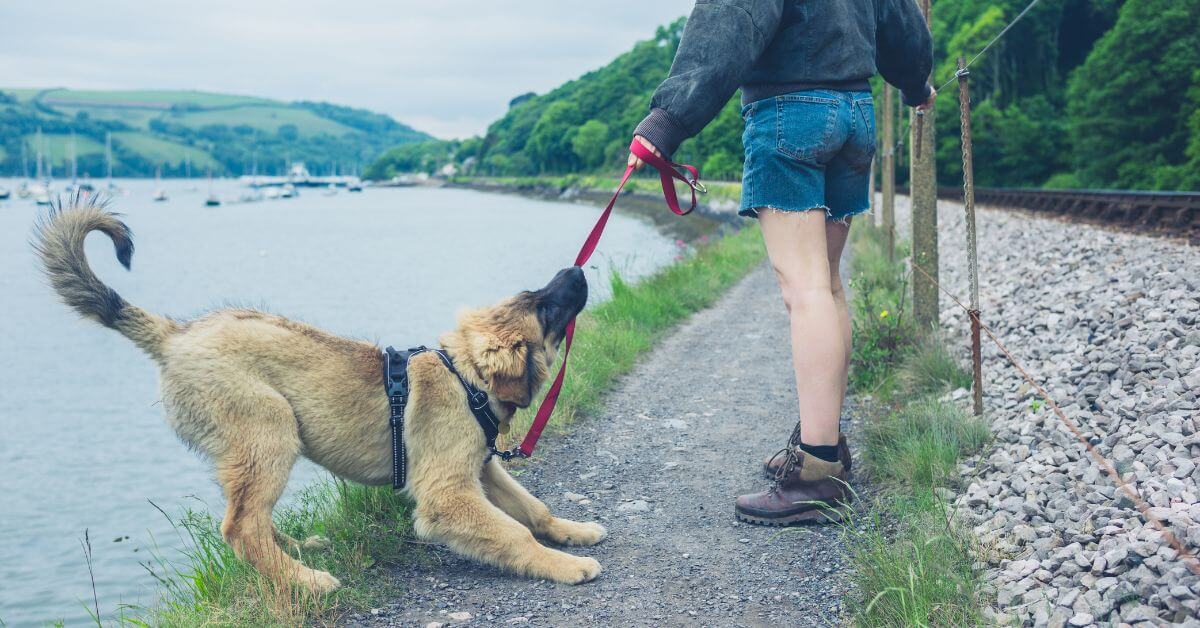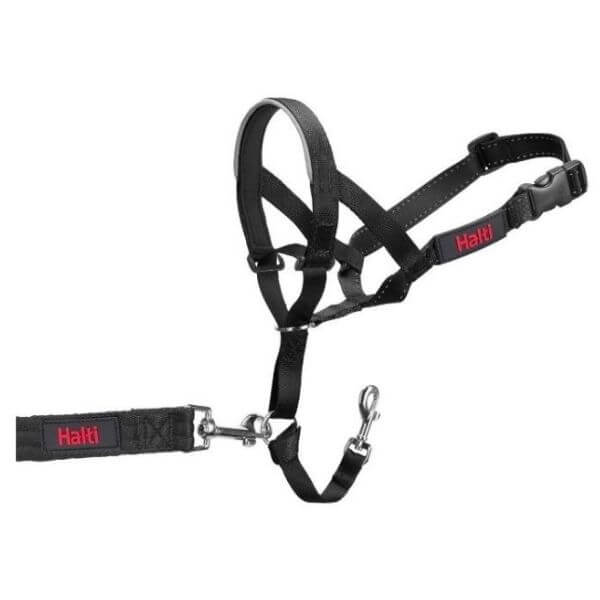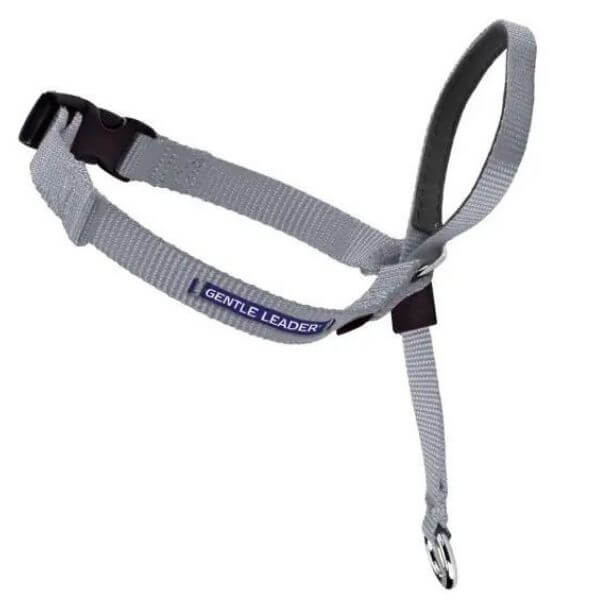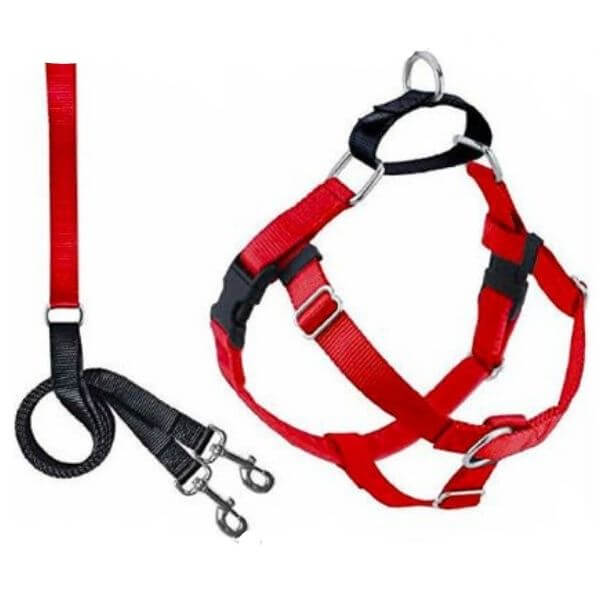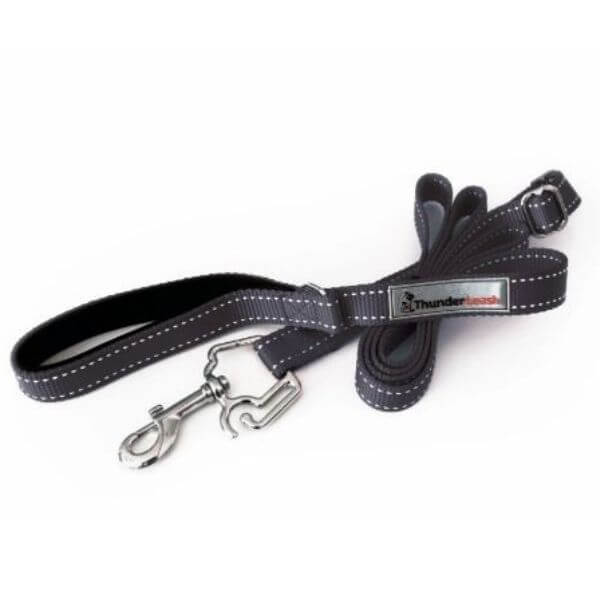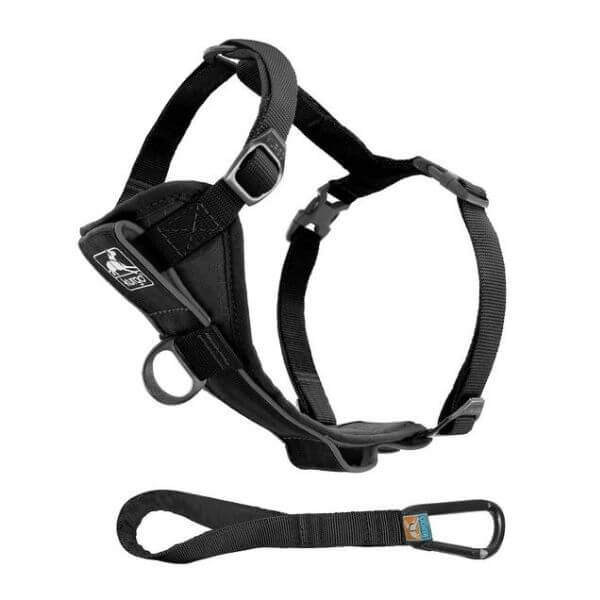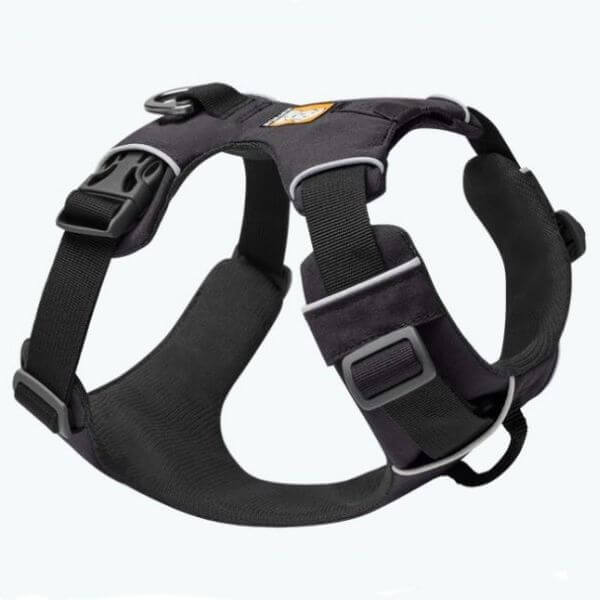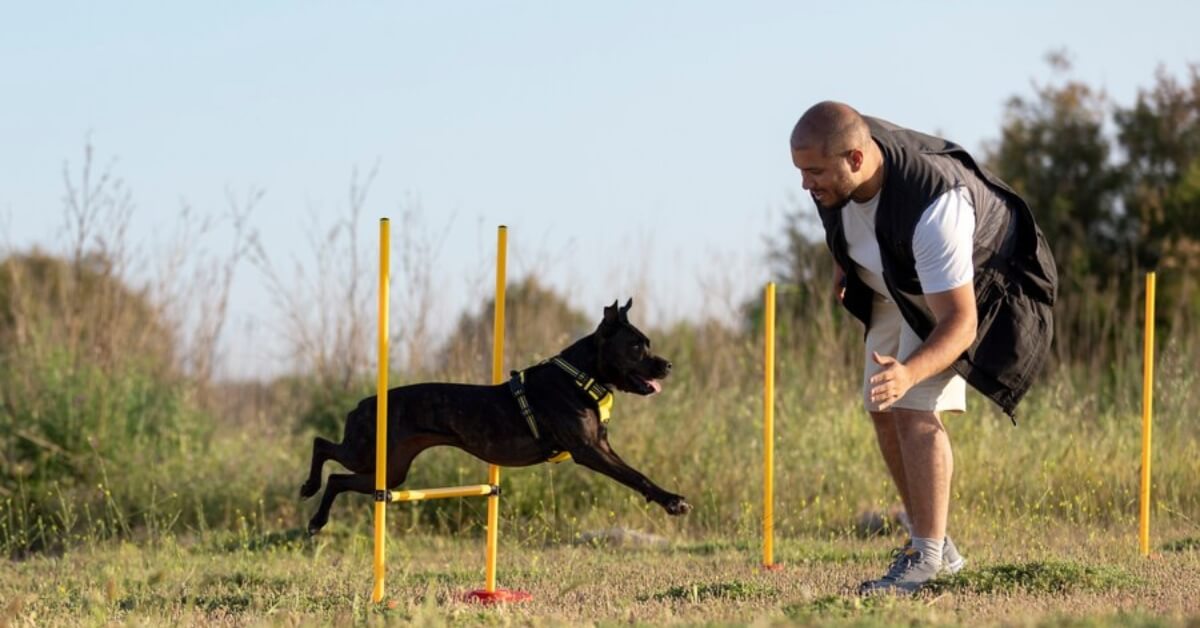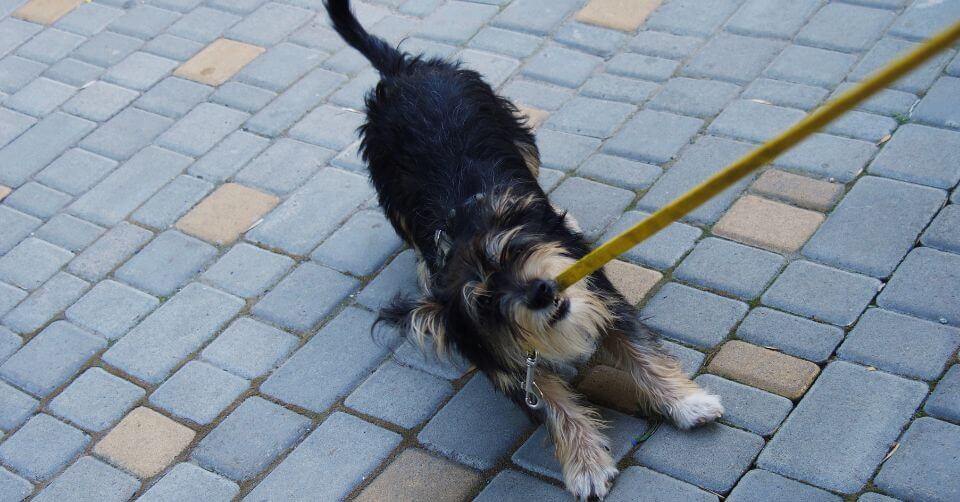
Understanding Why Your Dog Is Pulling The Leash
-
Natural Pace
Dogs naturally move at a faster pace than humans. They might pull on the leash to go faster or explore their surroundings, as our pace might seem too slow for them.
-
Excitement and Curiosity
Dogs are curious animals. Their environment is full of exciting smells, sights, and sounds. This excitement and curiosity can lead them to pull on their leash as they try to investigate everything around them.
-
Predatory Instinct
Dogs have a natural predatory instinct. They may pull on the leash when they see potential prey, like a squirrel or a bird.
-
Lack of Training
If a dog hasn’t been properly leash trained, they may not understand that they’re not supposed to pull. They may also associate pulling with getting what they want – moving faster, exploring interesting spots, or getting closer to other animals.
-
Fear or Anxiety
If a dog is afraid or anxious about something, they may pull on the leash to try to escape the source of their fear or anxiety.
-
Dominance and Control
Some dogs might pull on the leash as a way of asserting dominance or control over their owner. This is more likely in dogs who have not been trained or socialized properly.
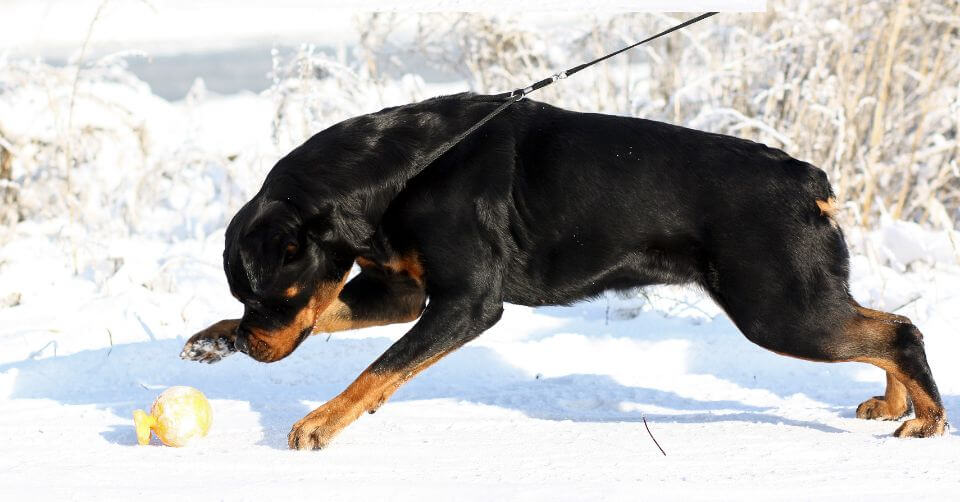
Signs of Leash Pulling issue
-
Constant tension on the leash:
If your dog is pulling ahead all the time, you’ll find that the leash is always taut rather than slack. This is one of the clearest signs of leash pulling.
-
Choking or coughing:
Many dogs who pull on their leashes can start choking or coughing because the collar is constantly pressing on their windpipe.
-
Walking in front of you:
A leash pulling dog will often try to lead the way and will consistently position themselves in front of you, instead of walking by your side.
-
Resisting correction:
Even when you attempt to correct their direction or pull them back, they resist and continue to forge ahead.
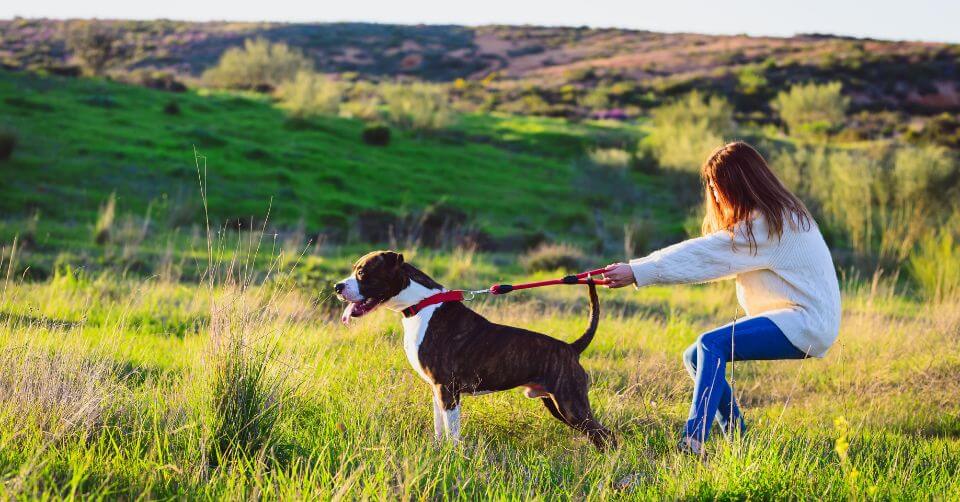
Triggers of Leash Pulling behaviour
-
Excitement:
Dogs are excitable creatures, aren’t they? When they see something exciting or interesting, they just can’t help but want to investigate. It could be another dog, a squirrel, or even just a new scent. This excitement often results in them trying to pull you towards whatever has caught their interest.
-
Fear or Anxiety:
Just like humans, dogs also respond to fear or anxiety by trying to escape from the source of their distress. This can often cause them to pull on the leash to try and get away as fast as they can.
-
High Energy Levels:
Some dogs have a higher energy level than others. If your dog is full of energy and not getting enough exercise to burn it off, they may end up pulling on the leash during walks.
-
Seeing Other Dogs or People:
Some dogs get very excited when they see other dogs or people, and their first instinct is to go over and say hello. This can often result in them pulling on the leash.
-
New Environments:
A new environment full of new smells, sounds, and sights can be incredibly exciting for a dog. This excitement can often lead to leash pulling as your dog tries to explore this new place.
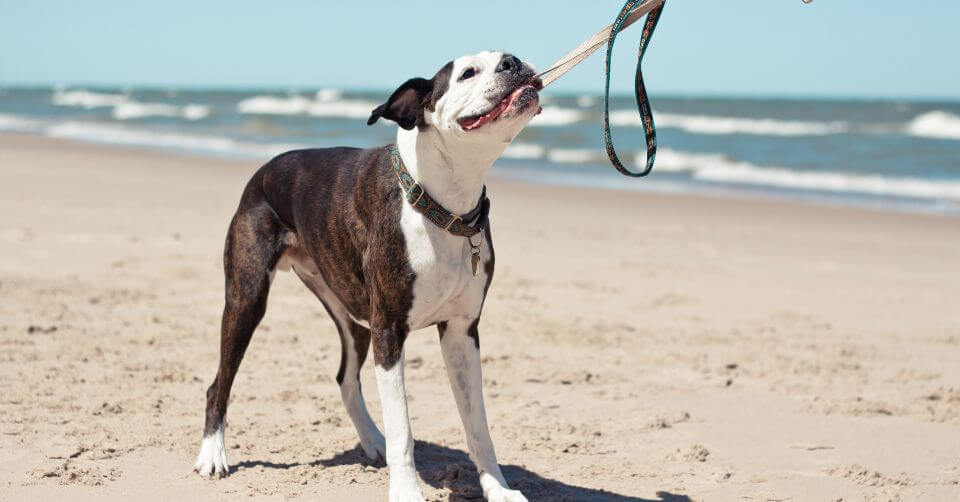
How to Handle Leash Pulling: Do’s and Don’ts
Do’s
-
Do Train Consistently:
Consistency is key when it comes to teaching your dog not to pull on the leash. Make sure to stick with your training methods and don’t allow your dog to pull, even if you’re in a hurry. This sends a clear message that pulling will not get them where they want to go.
-
Do Use the Right Equipment:
There are numerous products on the market designed to curb leash pulling, like front-clip harnesses and head halters. These can be very useful tools, but remember, they are just tools and won’t replace proper training.
-
Do Practice the “Stop and Be a Tree” Technique:
When your dog starts to pull, stop walking and don’t move until they release the tension on the leash. This teaches them that pulling will not get them where they want to go.
-
Do Seek Professional Help if Needed:
If you’re struggling to manage your dog’s leash pulling, don’t hesitate to seek help from a professional dog trainer. They can provide valuable guidance and help speed up the training process.
-
Do Reward Good Behavior:
If your dog is walking nicely without pulling, reward them! This could be in the form of treats, praise, or even just a quick pet. This helps reinforce the good behavior and makes it more likely to occur in the future.
Don’ts
-
Don’t Use Force or Punishment:
Avoid using choke chains or prong collars, as these can cause physical harm and fear, which can actually exacerbate the problem.
-
Don’t Allow Pulling Sometimes:
If you let your dog pull sometimes but not other times, you’ll send mixed signals. Be consistent with your expectations and don’t allow pulling at any time.
-
Don’t Get Frustrated:
Training takes time, and it’s natural to feel frustrated if progress seems slow. But remember, your dog can pick up on your emotions, and if you’re frustrated, they will be too. Keep training sessions positive and end on a good note.
-
Don’t Expect Immediate Results:
Changing behavior takes time. Be patient and celebrate small victories along the way.
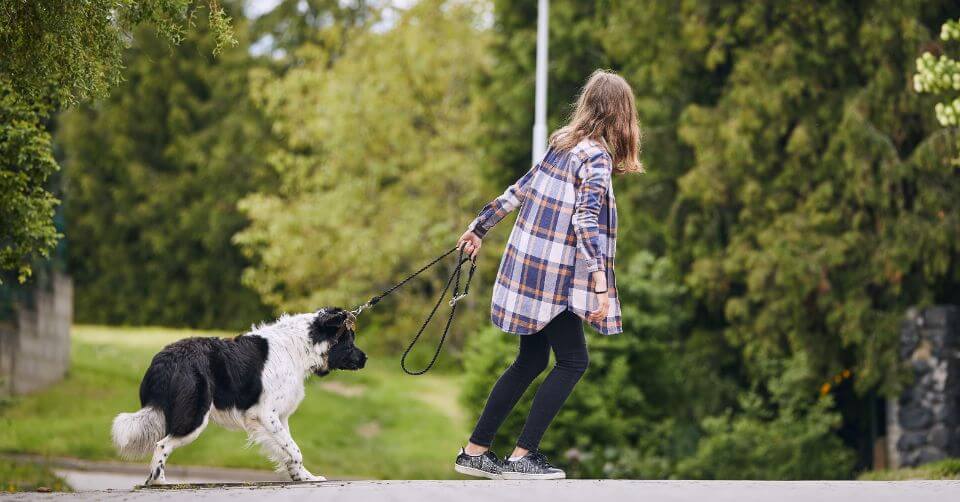
Recommended Products to Manage the Leash Pulling behaviour
Key Features
| It has a unique patented design that steers your dog’s head to control the direction of movement. | |
| The adjustable strap provides a great fit. | |
| It is equipped with a safety loop that attaches to a regular collar to prevent your dog from getting off the leash. | |
| The padding ensures the comfort of your dog. | |
| A training guide is included with the head collar. | |
| It comes in different sizes to accommodate all breeds. |
Pros
| It is effective at preventing dogs from pulling. | |
| The safety loop adds an extra layer of security. | |
| The padding offers enhanced comfort for your dog. | |
| Different sizes mean it’s suitable for all breeds. |
Cons
| Dogs may initially find it uncomfortable | |
| It requires time for your dog to get used to it. | |
| If not fitted correctly, it can rub and cause discomfort. | |
| The collar may slip off in dogs with a narrower face. |
Key Features
| The design allows for the immediate, gentle control of your dog. | |
| There’s a padded nose loop for extra comfort. | |
| The adjustable neck strap fits all sizes. | |
| It does not choke your dog, reducing potential strain injuries. | |
| It comes with a detailed training guide and DVD. | |
| It’s made from a durable nylon material that withstands vigorous pulling. |
Pros
| It allows you to steer your dog, making it an effective training tool. | |
| It’s comfortable and doesn’t cause coughing or choking. | |
| It’s suitable for dogs of all sizes. | |
| The inclusion of a training guide and DVD ensures that you can use it effectively. |
Cons
| It may take some time for your dog to get used to wearing it. | |
| Some dogs might resist the head collar. | |
| It may cause fur rubbing off if not fitted properly. | |
| Not all dogs respond well to the headcollar method of control. |
Key Features
| The harness has a patented control loop on the back, which tightens gently around your dog’s chest to discourage pulling behavior. | |
| It has four adjustment points for a perfect fit. | |
| The straps are lined with velvet for your dog’s comfort. | |
| It features a Swiss Velvet-lined chest strap to help prevent rubbing and chafing. | |
| The stainless-steel hardware used is very strong and durable. | |
| It’s available in different sizes and a wide range of colors. |
Pros
| It discourages pulling effectively without causing any harm or discomfort to your dog. | |
| The velvet lining prevents chafing and provides added comfort. | |
| The harness is easy to fit and adjust. | |
| The choice of different colors and sizes allows for customization. |
Cons
| The initial fitting can be complex due to the various adjustment points. | |
| Over time, the velvet lining may wear out. | |
| The front attachment may not be effective for dogs that pull extremely hard. | |
| Some dogs may be able to escape from the harness if not properly adjusted. |
Key Features
| It features a front leash design that steers your dog to the side and redirects his forward motion. | |
| The harness rests across your dog’s chest instead of his throat, preventing choking and gagging. | |
| Four adjustment points provide maximum comfort and reliable fit. | |
| It comes with quick-snap buckles on the shoulder and belly straps for easy on and off. | |
| The belly strap is a complementary color, making it easy to identify which strap goes over the shoulders and which goes under the belly. | |
| It’s made of durable nylon with strong metal rings and snap hooks. |
Pros
| It discourages dogs from pulling on the leash without causing choking. | |
| It’s easy to put on and adjust. | |
| The colored belly strap helps with proper harness placement. | |
| The strong and durable materials provide longevity. |
Cons
| Some dogs might be able to back out of the harness. | |
| The front-chest leash attachment may tangle under the dog’s front legs for some dogs. | |
| Improper adjustment can lead to chafing. | |
| Some users find the sizing chart to be inaccurate. |
Key Features
| The design converts from a regular leash to a no-pull leash in seconds. | |
| It uses a safe and effective pressure on the chest to discourage pulling. | |
| It doesn’t involve any complex strapping or fitting – just wrap and go. | |
| It comes with padded handles for a comfortable grip. | |
| The no-pull configuration applies gentle, safe pressure on your dog’s chest. | |
| It is available in different sizes and colors. |
Pros
| The two-in-one leash and harness function offers versatility. | |
| The simple design makes it easy to put on and take off. | |
| The gentle pressure method effectively reduces pulling without causing harm. | |
| It comes with a padded handle for added comfort. |
Cons
| Dogs with high energy might still manage to pull. | |
| The pressure on the chest might not be effective for all breeds. | |
| Some users find the adjustment range for sizes to be limited. | |
| It may take time for your dog to get used to the chest pressure. |
Key Features
| The design includes a chest pad to reduce stress on the trachea and sternum. | |
| It features five adjustment points to perfectly fit dogs of all sizes and shapes. | |
| It has a front leash attachment for no-pull use and a dog seat belt loop for car use. | |
| The harness comes with a 10-inch lead for training or to use as a dog seat belt loop. | |
| It is made with high-quality, durable materials for long-lasting use. | |
| It’s available in different sizes and colors to fit dogs of all breeds. |
Pros
| It can be used as both a walking harness and a car harness, providing excellent value for money. | |
| The front leash attachment helps in controlling dogs that pull. | |
| The included dog seat belt loop adds an extra level of safety during car travels. | |
| It can be easily adjusted to fit your dog perfectly. |
Cons
| It can be a bit complex to put on and take off. | |
| Some users reported that the buckles could be sturdier. | |
| It might not be ideal for dogs with a very deep chest or narrow waist. | |
| Some users reported the front chest piece might twist for heavy pullers. |
Key Features
| The no-pull walking solution provides a front leash attachment for steering your dog. | |
| The design includes neoprene-lined straps for the comfort of your dog. | |
| It has five points of adjustability to fit dogs of various sizes. | |
| The design includes a seat belt handle and car control strap to restrain your dog in the car. | |
| It’s available in three colors and four sizes to suit all types of dogs. | |
| The straps include reflective stitching for better visibility during night walks. |
Pros
| It offers multiple uses including car restraint, reducing pulling, and standard walking. | |
| The neoprene-lined straps ensure your dog’s comfort. | |
| The reflective stitching enhances safety during night walks. | |
| The adjustability of the harness ensures a perfect fit for any size of dog. |
Cons
| Some users find the initial setup and adjustment to be time-consuming. | |
| The sizing might be off for some breeds of dogs. | |
| It might not be durable enough for aggressive pullers. | |
| The chest strap might be a bit high on some dogs, potentially causing chafing under the front legs. |
Key Features
| The harness includes two leash attachment points: an aluminum V-ring on the back and reinforced webbing on the chest. | |
| It features a padded chest and belly panel for good load dispersion and comfortable, extended wear. | |
| The four points of adjustment allow for a customized fit. | |
| It includes reflective trim for visibility in low-light conditions and a light loop for attaching The Beacon™ safety light. | |
| It comes with an ID pocket to store dog tags. | |
| It’s made with durable material that withstands everyday wear and tear. |
Pros
| The harness is durable and comfortable for everyday wear. | |
| The two leash attachment points provide versatility. | |
| The included light loop and reflective trim increase safety during night walks. | |
| The ID pocket is a unique and useful feature. |
Cons
| Some dogs might still be able to pull with the back attachment. | |
| The chest strap may not be secure for some breeds. | |
| The adjustment points may loosen over time, requiring frequent readjustments. | |
| It might be a bit pricey compared to other options. |

